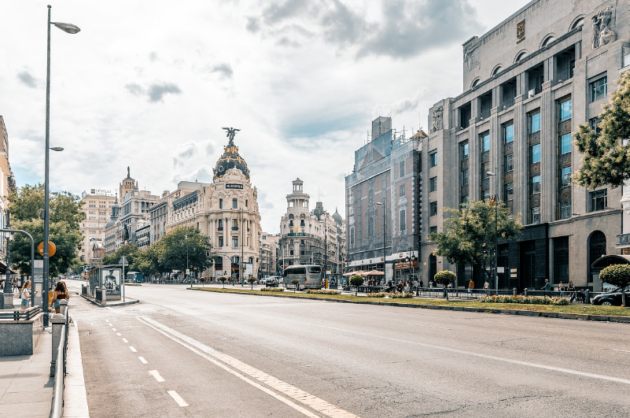
Madrid is a city where history and modernity coexist in perfect harmony. From its majestic palaces and bustling plazas to its ancient churches and winding streets, Madrid offers a rich tapestry of cultural and historical landmarks waiting to be explored.
For those eager to delve into the city’s past without breaking the bank, free walking tours provide an ideal way to experience Madrid’s historical grandeur. Join us on a journey through time as we explore some of the most iconic landmarks that make Madrid a treasure trove of history.
Why Madrid Is So Popular For Free Walking Tours
Madrid’s popularity for free walking tours can be attributed to several factors that make the city an ideal destination for exploring on foot. Here are some key reasons Madrid is a hotspot for free walking tours.
Historical Significance
Madrid boasts many historical sites, from grand royal palaces and ancient cathedrals to historic squares and monuments. These landmarks provide a rich tapestry of stories and events that tour guides can narrate, making the walking tours educational and engaging.
Cultural Vibrancy
The city is a cultural hub, home to world-renowned museums like the Prado, Reina Sofía, and Thyssen-Bornemisza. The abundance of cultural sites ensures that there is always something interesting to see and learn about on a walking tour.
Diverse Architecture
Madrid’s architectural landscape blends different styles, including Gothic, Renaissance, Baroque, and modern. This variety makes walking tours visually stimulating and informative as guides explain the evolution of architectural styles and their historical contexts.
Compact City Center
Many of Madrid’s top attractions are located within a relatively small area, making it easy to visit multiple sites in a single free tour Madrid. The compactness of the city center means that tourists can see a lot without having to travel long distances.
Pedestrian-Friendly
Madrid is known for its wide sidewalks, pedestrian zones, and beautiful parks. These features make it a pleasant city to explore on foot, enhancing the overall experience of a walking tour. Free walking tours are accessible to many visitors, regardless of their budget. This inclusivity attracts diverse tourists who want to learn about the city without spending much money. Below, you can find the most popular tourist spots in Madrid.
The Royal Palace
This is an abundant symbol of Spanish royalty. Built in the 18th century, this magnificent palace boasts over 3,000 rooms filled with stunning art collections, elaborate tapestries, and lavish furnishings. As the largest royal palace in Europe, it serves as the official residence of the Spanish royal family, although it is primarily used for state ceremonies. The free walking tours often start here, providing a captivating introduction to the Spanish monarchy’s grandeur and the Baroque era’s architectural brilliance.
Plaza Mayor
A short stroll from the Royal Palace brings us to Plaza Mayor, the heart of Madrid’s old town. This grand square, with its symmetrical residential buildings and charming arcades, dates back to the 17th century. Plaza Mayor has witnessed many significant events in Spanish history, from royal ceremonies and bullfights to public executions and markets.
Puerta del Sol
Continuing a journey, you can arrive at Puerta del Sol, one of Madrid’s most famous and bustling squares. Known as the “Gateway of the Sun,” this square has been a focal point of Spanish history since the 15th century. It is home to the iconic clock tower of the Real Casa de Correos, where crowds gather every New Year’s Eve to mark the twelve chimes of midnight. Puerta del Sol is also the symbolic center of Spain, marked by the Kilometer Zero plaque from which all radial roads are measured. Free walking tours often highlight the historical significance of this square and its role in shaping modern Spain.
The Almudena Cathedral
Adjacent to the Royal Palace stands the Almudena Cathedral, a stunning example of neo-Gothic and neo-Romanesque architecture. Although construction began in the late 19th century, the cathedral was not completed until 1993, making it a relatively modern addition to Madrid’s historical landscape. The cathedral’s interior blends traditional and contemporary elements with a beautiful nave, striking stained glass windows, and a magnificent dome offering panoramic city views. Visitors on free walking tours are often captivated by the cathedral’s beauty and the stories of its prolonged construction.
The Prado Museum
No historical journey through Madrid would be complete without a visit to the Prado Museum, one of the world’s premier art institutions. Established in 1819, the museum houses an extensive collection of European art, with masterpieces by Velázquez, Goya, El Greco, and many others. The Prado’s neoclassical building is a historical landmark that architect Juan de Villanueva designed. Free walking tours often include a stop here, offering art enthusiasts a chance to marvel at the works that have shaped European art history.
Retiro Park
You can finish a free journey at Retiro Park, a green oasis in the heart of Madrid. Originally created as a royal retreat in the 17th century, this expansive park is now a beloved public space. It features beautiful gardens, sculptures, fountains, and the stunning Crystal Palace, a glass pavilion inspired by London’s Crystal Palace. Retiro Park’s serene environment provides a perfect end to a historical walking tour, where visitors can relax and reflect on the city’s rich heritage.
The Bottom Line
Madrid’s historical landmarks offer a fascinating glimpse into the city’s past, revealing stories of royalty, artistry, and cultural evolution. Free walking tours provide an accessible and engaging way to explore these treasures, allowing visitors to immerse themselves in Madrid’s history without the constraints of a structured itinerary. Whether you’re a history buff, an art lover, or simply a curious traveler, the historical landmarks of Madrid promise an unforgettable journey through time.
